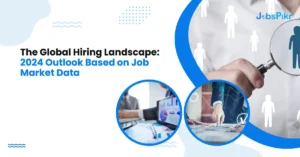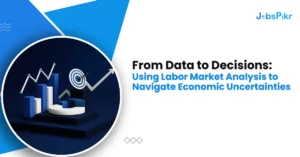As the name suggests, Talent Intelligence gathers current intel about the workforce pool of an industry. You can define business goals, conduct skill gap analysis, and measure employee engagement levels. These features are highly useful for HR departments across companies. Setting up a TI team will help to implement these strategies quickly and build a voice within the company, taking the company in the right direction. We can see many successful global companies like Google and Microsoft embracing TI as a dedicated function driving overall business strategies. Having an active TI team looks into the details like jobs data, talent market insights, forecasting hiring requirements, upskilling and reskilling the workforce, benchmarking salaries and so much more.
Forward-thinking leaders of the company use internal and external web data for making strategic decisions. Over the past year, according to Gartner, business priority areas in organizations have changed. Workforce planning has seen a 32% growth since 2020 and the trend has been on a rise. Keeping in mind, the great recession and the great regret period, we are now in a different labor market than what it used to be before the pandemic. Insights drawn by labor market tools like JobsPikr helps to understand industry insights, which provides an added advantage to your decisions. Take Tesla as an example, after acquiring Twitter recently, the company has fired over 4.5 K employees to adjust business priorities and so did Meta, by recently laying off over 11,000 employees. Here’s why your company needs a talent intelligence team like most of the successful tech giants of the industry, like Google, Intel, and Microsoft.
Why your company needs a TI team
Strategic teams like TI help businesses in three important ways: To identify emerging talent trends, understand the competitor landscape, and create location-driven strategies. TI teams add significant value by mapping out the talent of your competitors. This data is then structured into identifying if any new talent is hired, suggesting the company’s expansion into a new market. Analysis run by the TI team helps the management to check whether the talent and skill sets needed for the job exist in the aspiring locality for expansion and achieve the right diversity goals.
Setting up TI teams
Setting up a talent intelligence team is becoming the most crucial solution for making recruitment decisions. The team collects and analyses external data for providing a semblance of clarity to the stakeholders. An ideal TI team will have good relations with the chief of staff, workforce management, and strategists across business units. Check out this webinar conducted by JobsPikr on using TI as a function for teams. Having ideal and core preferences set for forming TI teams, do take a look at candidates having soft skills. Look for people with communication and storytelling skills or seek those who love data and are curious in nature. The team members must have a knack for seeking why and digging deep into a story.
Best practices followed by companies
A community of practice can be set up where different organization leaders come together to create a team for handling the TI function, where usually a chief of staff leads these meetings. HR provides context on what is needed and the research team helps to build custom talent intelligence. To know where to look for, and what data to pick, for validating and mitigating risks.
Form a centralized team
A centralized team works better and is efficient as it provides a better context for all business processes. It also helps to deduplicate the allocation of resources across geographies and markets. This structure simply provides a lot of value and influence to the organization.
Analytics as an iterative process
A centralized team should be iterating on business processes and improving their understanding of data. Iteration and adaptability along with collaboration is the key to adapting and growing. One of the best practices is to have all the department leads work together on gathering insights from data and treat analysis as an iterative process.
Establish data culture across teams
Data literacy and culture in an organization can create meaningful and actionable insights that a business can focus on. Hiring the right people and more so the first employee in the team is the most important aspect as innovation in this space is a key to unleashing the potential of data. Start with looking for the right people, create processes, and then work your way towards automation and technology.
Creating roles and responsibilities
The data analytics department needs a front and a backend team. Frontend collaborators are communicators and information facilitators who can work well with all the departments and business heads. Backend collaborators are more tech-savvy and are focussed on problem-solving. However, dedicated data engineers also play an important role in larger teams.
Conclusion
According to a recent article by BQprime.com, Major tech companies have announced layoffs this year. Meta has laid off over 11 K employees, Microsoft and Stripe have laid off about 1 K employees, and Salesforce has cut nearly 500 jobs. Most big tech companies have cut down jobs because of the economy, inflation, and probable recession in the coming future. So setting up talent intelligence teams and building an interactive cohesive work environment can be a way to tackle issues at its forefront.
The above insights tell us that the pandemic made people re-evaluate work and companies readjust business priorities for creating an efficient workforce. There is a considerable shift in the work culture with resignations, layoffs, and burnouts as well as return-to-work and work-from-home policies. The work environment might have become stressful. So talent management software can aid HR departments to develop effective approaches to retaining talent, improve employee experience, help to upskill, and encouraging diversity and inclusion.



